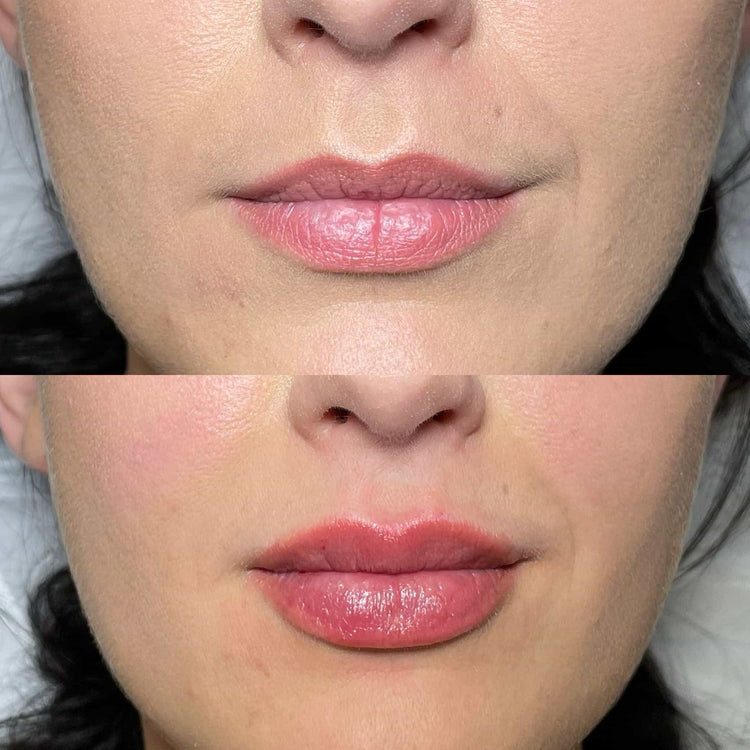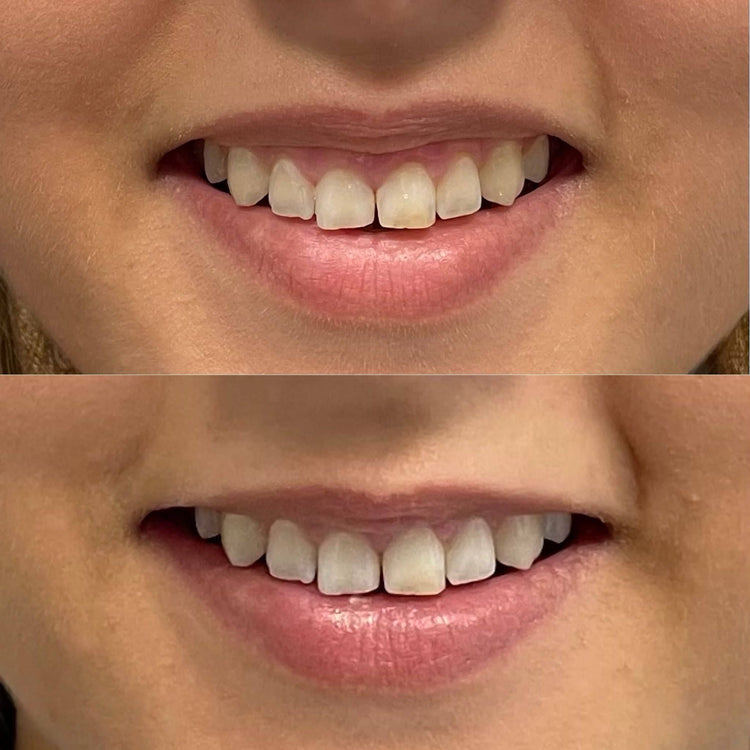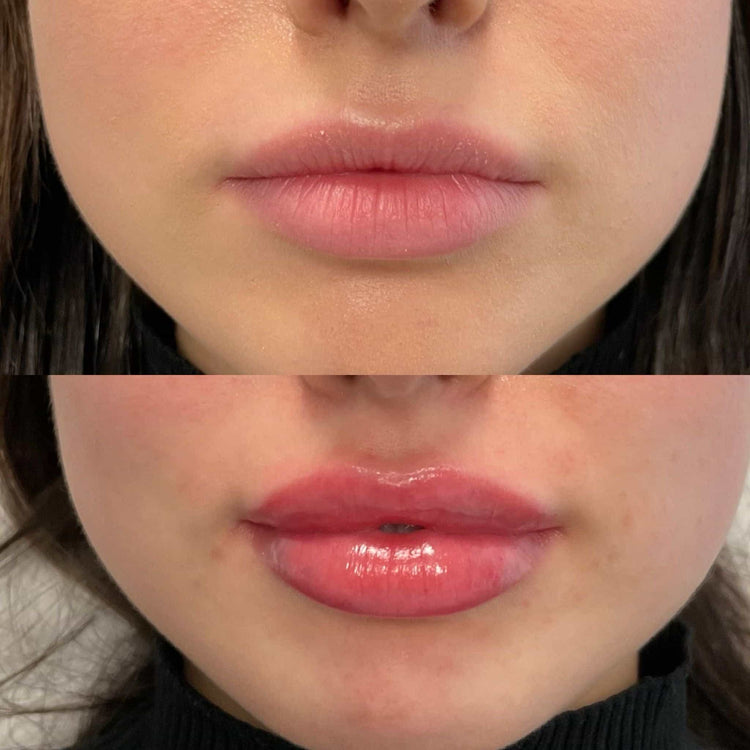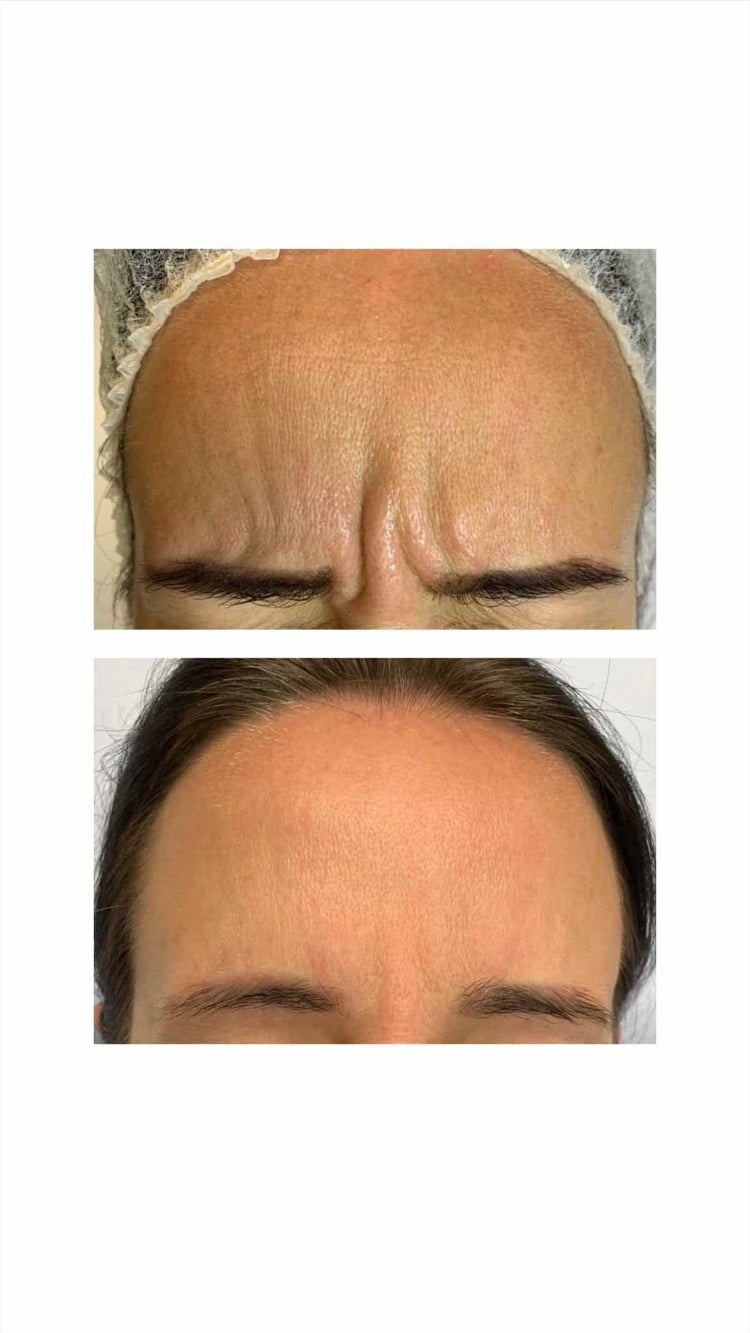History of Jowls
The history of jowls in Woldingham, Surrey, is a fascinating journey through time that intertwines local traditions, architectural styles, and evolving perceptions of beauty. From ancient origins to their prominence in medieval portraits, jowls have played a significant role in shaping the visual identity of this charming Surrey village.
Origins and Early Development
Jowls, those fleshy folds of skin extending from the jawline, have been a recurring feature in human physiognomy throughout history. While their exact origins remain shrouded in the mists of time, speculation abounds regarding their possible evolutionary and cultural significance. Some anthropologists suggest that jowls may have served as a visual indicator of age and maturity, attracting mates and signaling social status within early human societies.
During the medieval period, portraits often depicted subjects with prominent jowls, which were sometimes interpreted as signs of wisdom, nobility, or even power. The prevalence of this feature in artwork from Woldingham, Surrey, during this era suggests that jowls may have held particular cultural significance within the village’s artistic traditions.
Over time, societal perceptions of beauty shifted, and the idealization of a smooth, sculpted jawline gained traction. Consequently, jowls became increasingly associated with aging and decline, gradually fading from favor in mainstream aesthetic representations. However, their historical presence in Woldingham’s artistic legacy serves as a reminder of the dynamic nature of cultural values and the enduring fascination with human physical characteristics.
Notable Owners and Residents
Despite shifting societal perceptions of beauty over time, the history of jowls in Woldingham, Surrey offers a glimpse into past aesthetics and cultural values. While specific details about notable owners or residents who possessed prominent jowls remain elusive, their presence in medieval portraits suggests they held some significance within the village’s artistic tradition.
- Further research into Woldingham’s historical records and local archives may reveal more information about individuals known for their distinctive features.
- Examining architectural details and surviving manuscripts from the medieval period could shed light on how jowls were depicted in various artistic contexts within the village.

Architectural Evolution
The history of jowls in Woldingham, Surrey, is a fascinating journey through time that intertwines local traditions, architectural styles, and evolving perceptions of beauty. From ancient origins to their prominence in medieval portraits, jowls have played a significant role in shaping the visual identity of this charming Surrey village.
Jowls, those fleshy folds of skin extending from the jawline, have been a recurring feature in human physiognomy throughout history. While their exact origins remain shrouded in the mists of time, speculation abounds regarding their possible evolutionary and cultural significance. Some anthropologists suggest that jowls may have served as a visual indicator of age and maturity, attracting mates and signaling social status within early human societies.
During the medieval period, portraits often depicted subjects with prominent jowls, which were sometimes interpreted as signs of wisdom, nobility, or even power. The prevalence of this feature in artwork from Woldingham, Surrey, during this era suggests that jowls may have held particular cultural significance within the village’s artistic traditions.
Over time, societal perceptions of beauty shifted, and the idealization of a smooth, sculpted jawline gained traction. Consequently, jowls became increasingly associated with aging and decline, gradually fading from favor in mainstream aesthetic representations. However, their historical presence in Woldingham’s artistic legacy serves as a reminder of the dynamic nature of cultural values and the enduring fascination with human physical characteristics.
Despite shifting societal perceptions of beauty over time, the history of jowls in Woldingham, Surrey offers a glimpse into past aesthetics and cultural values. While specific details about notable owners or residents who possessed prominent jowls remain elusive, their presence in medieval portraits suggests they held some significance within the village’s artistic tradition.
Description of Jowls
The history of jowls in Woldingham, Surrey, is a journey through time that intertwines local traditions with evolving perceptions of beauty. From ancient origins to their prominence in medieval portraits, these fleshy folds of skin have played a role in shaping the village’s visual identity.
Location and Surroundings
Jowls, those characteristic fleshy folds extending from the jawline, are more than just a physical feature; they hold a fascinating history intertwined with Woldingham’s past.
While their exact origins remain shrouded in mystery, anthropologists speculate that jowls may have served as visual indicators of age and maturity in early human societies, influencing mate selection and social status.
During the medieval period, portraits from Woldingham often depicted individuals with prominent jowls. These were sometimes interpreted as signs of wisdom, nobility, or even power, suggesting that jowls held a particular cultural significance within the village’s artistic traditions.
However, perceptions of beauty evolved over time. The idealization of a smooth jawline gained prominence, leading to jowls being associated with aging and decline. Despite this shift, their presence in Woldingham’s historical artwork serves as a reminder of the dynamic nature of cultural values and our enduring fascination with human physical characteristics.
Exterior Features
Jowls are fleshy folds of skin that extend from the jawline.

Throughout history, they have been a common feature in human physiognomy, appearing in art, sculpture, and everyday life.
Their prominence varied across cultures and time periods, reflecting changing ideals of beauty and perceptions of age.
Facade and Entryways
Jowls are fleshy folds of skin that extend from the jawline. They have been a recurring feature in human physiognomy throughout history, appearing in art, sculpture, and everyday life. Their prominence varied across cultures and time periods, reflecting changing ideals of beauty and perceptions of age.
In Woldingham, Surrey, the presence of jowls in medieval portraits suggests a particular cultural significance during that era. These prominent jowls were sometimes interpreted as signs of wisdom, nobility, or even power, highlighting a different aesthetic standard compared to modern times.
Over time, societal perceptions of beauty shifted, and the idealization of a smooth, sculpted jawline gained traction. Consequently, jowls became increasingly associated with aging and decline.
While their historical presence in Woldingham’s artistic legacy is a testament to the dynamic nature of cultural values, specific details about notable individuals who possessed prominent jowls remain elusive.
Examining architectural details and surviving manuscripts from the medieval period could shed light on how jowls were depicted in various artistic contexts within the village.
Gardens and Grounds
Jowls, those fleshy folds of skin extending from the jawline, have been a recurring feature in human physiognomy throughout history. While their exact origins remain shrouded in the mists of time, speculation abounds regarding their possible evolutionary and cultural significance. Some anthropologists suggest that jowls may have served as a visual indicator of age and maturity, attracting mates and signaling social status within early human societies.
During the medieval period, portraits often depicted subjects with prominent jowls, which were sometimes interpreted as signs of wisdom, nobility, or even power. The prevalence of this feature in artwork from Woldingham, Surrey, during this era suggests that jowls may have held particular cultural significance within the village’s artistic traditions.
Over time, societal perceptions of beauty shifted, and the idealization of a smooth, sculpted jawline gained traction. Consequently, jowls became increasingly associated with aging and decline, gradually fading from favor in mainstream aesthetic representations. However, their historical presence in Woldingham’s artistic legacy serves as a reminder of the dynamic nature of cultural values and the enduring fascination with human physical characteristics.
Despite shifting societal perceptions of beauty over time, the history of jowls in Woldingham, Surrey offers a glimpse into past aesthetics and cultural values. While specific details about notable owners or residents who possessed prominent jowls remain elusive, their presence in medieval portraits suggests they held some significance within the village’s artistic tradition.
Further research into Woldingham’s historical records and local archives may reveal more information about individuals known for their distinctive features. Examining architectural details and surviving manuscripts from the medieval period could shed light on how jowls were depicted in various artistic contexts within the village.
Interior Design and Layout
Jowls, those fleshy folds of skin extending from the jawline, have been a recurring feature in human physiognomy throughout history. While their exact origins remain shrouded in the mists of time, speculation abounds regarding their possible evolutionary and cultural significance. Some anthropologists suggest that jowls may have served as a visual indicator of age and maturity, attracting mates and signaling social status within early human societies.
During the medieval period, portraits often depicted subjects with prominent jowls, which were sometimes interpreted as signs of wisdom, nobility, or even power. The prevalence of this feature in artwork from Woldingham, Surrey, during this era suggests that jowls may have held particular cultural significance within the village’s artistic traditions.
Over time, societal perceptions of beauty shifted, and the idealization of a smooth, sculpted jawline gained traction. Consequently, jowls became increasingly associated with aging and decline, gradually fading from favor in mainstream aesthetic representations. However, their historical presence in Woldingham’s artistic legacy serves as a reminder of the dynamic nature of cultural values and the enduring fascination with human physical characteristics.
Despite shifting societal perceptions of beauty over time, the history of jowls in Woldingham, Surrey offers a glimpse into past aesthetics and cultural values. While specific details about notable owners or residents who possessed prominent jowls remain elusive, their presence in medieval portraits suggests they held some significance within the village’s artistic tradition.
- Further research into Woldingham’s historical records and local archives may reveal more information about individuals known for their distinctive features.
- Examining architectural details and surviving manuscripts from the medieval period could shed light on how jowls were depicted in various artistic contexts within the village.
Main Hall and Reception Rooms
The Jowls, Main Hall, and Reception Rooms of a stately home often reflect the grandeur and history of its owners.
Imagine stepping into a grand hallway, the air thick with the scent of polished wood and old books. The walls are adorned with portraits of long-ago residents, their faces etched with time, perhaps even hinting at prominent jowls, a feature common in historical depictions.
The Main Hall, often the heart of the house, is a space for grand gatherings and intimate moments alike. It might boast a towering fireplace, its mantlepiece laden with family heirlooms. Stained-glass windows cast colorful patterns across the polished stone floor, illuminating the elegant furniture that speaks to bygone eras.
Adjacent to the Main Hall, the Reception Rooms offer a glimpse into the lives of the house’s inhabitants. Drawing rooms might be adorned with delicate floral arrangements and antique china, while libraries showcase shelves overflowing with leather-bound volumes.
These spaces are not merely rooms; they are repositories of history, each detail whispering stories of past generations who walked these halls.
Bedrooms and Private Suites
Bedrooms in a stately home offer a more intimate glimpse into the lives of its inhabitants. Stepping inside one of these chambers is like stepping back in time, surrounded by luxurious textiles and antique furniture that speak to a bygone era.
Private suites, often reserved for the most distinguished guests or members of the family, are even more lavish, boasting expansive layouts, ornate fireplaces, and walk-in wardrobes brimming with vintage garments. These rooms evoke a sense of grandeur and exclusivity, providing a sanctuary from the bustle of everyday life.
Private suites in stately homes often feature luxurious amenities that reflect the opulence of the era in which they were built. They might include spacious dressing rooms with antique vanity tables and mirrors, private sitting areas for quiet contemplation or receiving guests, and even attached bathrooms with clawfoot tubs and marble vanities.
Other Notable Spaces
Jowls are fleshy folds of skin extending from the jawline.
Throughout history, they have been a common feature in human physiognomy, appearing in art, sculpture, and everyday life.
Their prominence varied across cultures and time periods, reflecting changing ideals of beauty and perceptions of age.

Jowls are fleshy folds of skin that extend from the jawline. They have been a recurring feature in human physiognomy throughout history, appearing in art, sculpture, and everyday life. Their prominence varied across cultures and time periods, reflecting changing ideals of beauty and perceptions of age.
In Woldingham, Surrey, the presence of jowls in medieval portraits suggests a particular cultural significance during that era. These prominent jowls were sometimes interpreted as signs of wisdom, nobility, or even power, highlighting a different aesthetic standard compared to modern times.
Over time, societal perceptions of beauty shifted, and the idealization of a smooth, sculpted jawline gained traction. Consequently, jowls became increasingly associated with aging and decline.
While their historical presence in Woldingham’s artistic legacy is a testament to the dynamic nature of cultural values, specific details about notable individuals who possessed prominent jowls remain elusive.
Examining architectural details and surviving manuscripts from the medieval period could shed light on how jowls were depicted in various artistic contexts within the village.
- Further research into Woldingham’s historical records and local archives may reveal more information about individuals known for their distinctive features.
- Examining architectural details and surviving manuscripts from the medieval period could shed light on how jowls were depicted in various artistic contexts within the village.
Cultural Significance of Jowls
The history of jowls in Woldingham, Surrey, is a fascinating journey through time that intertwines local traditions, architectural styles, and evolving perceptions of beauty. From ancient origins to their prominence in medieval portraits, jowls have played a significant role in shaping the visual identity of this charming Surrey village.
Jowls, those fleshy folds of skin extending from the jawline, have been a recurring feature in human physiognomy throughout history. While their exact origins remain shrouded in the mists of time, speculation abounds regarding their possible evolutionary and cultural significance. Some anthropologists suggest that jowls may have served as a visual indicator of age and maturity, attracting mates and signaling social status within early human societies.
During the medieval period, portraits often depicted subjects with prominent jowls, which were sometimes interpreted as signs of wisdom, nobility, or even power. The prevalence of this feature in artwork from Woldingham, Surrey, during this era suggests that jowls may have held particular cultural significance within the village’s artistic traditions.
Over time, societal perceptions of beauty shifted, and the idealization of a smooth, sculpted jawline gained traction. Consequently, jowls became increasingly associated with aging and decline, gradually fading from favor in mainstream aesthetic representations. However, their historical presence in Woldingham’s artistic legacy serves as a reminder of the dynamic nature of cultural values and the enduring fascination with human physical characteristics.
Despite shifting societal perceptions of beauty over time, the history of jowls in Woldingham, Surrey offers a glimpse into past aesthetics and cultural values. While specific details about notable owners or residents who possessed prominent jowls remain elusive, their presence in medieval portraits suggests they held some significance within the village’s artistic tradition.
Further research into Woldingham’s historical records and local archives may reveal more information about individuals known for their distinctive features. Examining architectural details and surviving manuscripts from the medieval period could shed light on how jowls were depicted in various artistic contexts within the village.
Role in Local History and Community
The history of jowls in Woldingham, Surrey offers a fascinating glimpse into past aesthetics and cultural values. While specific details about notable individuals with prominent jowls remain unknown, their presence in medieval portraits suggests they held some significance within the village’s artistic tradition.

Further research into Woldingham’s historical records and local archives may reveal more information about these individuals. Examining architectural details and surviving manuscripts from the medieval period could shed light on how jowls were depicted in various artistic contexts within the village, providing a deeper understanding of their cultural significance.
Literary and Artistic References
Jowls, those fleshy folds of skin extending from the jawline, hold a fascinating history intertwined with Woldingham’s past.
While their exact origins remain shrouded in mystery, anthropologists speculate that jowls may have served as visual indicators of age and maturity in early human societies, influencing mate selection and social status.
During the medieval period, portraits from Woldingham often depicted individuals with prominent jowls. These were sometimes interpreted as signs of wisdom, nobility, or even power, suggesting that jowls held a particular cultural significance within the village’s artistic traditions.
Over time, societal perceptions of beauty evolved, and the idealization of a smooth jawline gained prominence. Consequently, jowls became increasingly associated with aging and decline.
Despite this shift, their presence in Woldingham’s historical artwork serves as a reminder of the dynamic nature of cultural values and our enduring fascination with human physical characteristics.
The history of jowls in Woldingham, Surrey, offers a glimpse into past aesthetics and cultural values. While specific details about notable owners or residents who possessed prominent jowls remain elusive, their presence in medieval portraits suggests they held some significance within the village’s artistic tradition.
Further research into Woldingham’s historical records and local archives may reveal more information about these individuals. Examining architectural details and surviving manuscripts from the medieval period could shed light on how jowls were depicted in various artistic contexts within the village, providing a deeper understanding of their cultural significance.
Preservation Efforts and Legacy
Jowls are fleshy folds of skin that extend from the jawline. They have been a recurring feature in human physiognomy throughout history, appearing in art, sculpture, and everyday life. Their prominence varied across cultures and time periods, reflecting changing ideals of beauty and perceptions of age.
In Woldingham, Surrey, the presence of jowls in medieval portraits suggests a particular cultural significance during that era. These prominent jowls were sometimes interpreted as signs of wisdom, nobility, or even power, highlighting a different aesthetic standard compared to modern times.
Over time, societal perceptions of beauty shifted, and the idealization of a smooth, sculpted jawline gained traction. Consequently, jowls became increasingly associated with aging and decline.
While their historical presence in Woldingham’s artistic legacy is a testament to the dynamic nature of cultural values, specific details about notable individuals who possessed prominent jowls remain elusive. Examining architectural details and surviving manuscripts from the medieval period could shed light on how jowls were depicted in various artistic contexts within the village.
Here are some avenues for further exploration:
* **Local Archives:** The Surrey History Centre or local libraries in Woldingham might hold genealogical records, estate documents, or other historical materials that mention individuals with notable physical features.
* **Art Historians:** Experts specializing in medieval portraiture could offer insights into the symbolic meanings associated with jowls in art from that period and whether there are any recurring patterns in their depiction within Woldingham’s artistic tradition.
Jowls, those fleshy folds of skin extending from the jawline, have been a recurring feature in human physiognomy throughout history. While their exact origins remain shrouded in the mists of time, speculation abounds regarding their possible evolutionary and cultural significance. Some anthropologists suggest that jowls may have served as a visual indicator of age and maturity, attracting mates and signaling social status within early human societies.
During the medieval period, portraits often depicted subjects with prominent jowls, which were sometimes interpreted as signs of wisdom, nobility, or even power. The prevalence of this feature in artwork from Woldingham, Surrey, during this era suggests that jowls may have held particular cultural significance within the village’s artistic traditions.
Over time, societal perceptions of beauty shifted, and the idealization of a smooth, sculpted jawline gained traction. Consequently, jowls became increasingly associated with aging and decline, gradually fading from favor in mainstream aesthetic representations. However, their historical presence in Woldingham’s artistic legacy serves as a reminder of the dynamic nature of cultural values and the enduring fascination with human physical characteristics.
Despite shifting societal perceptions of beauty over time, the history of jowls in Woldingham, Surrey offers a glimpse into past aesthetics and cultural values. While specific details about notable owners or residents who possessed prominent jowls remain elusive, their presence in medieval portraits suggests they held some significance within the village’s artistic tradition.
Further research into Woldingham’s historical records and local archives may reveal more information about these individuals. Examining architectural details and surviving manuscripts from the medieval period could shed light on how jowls were depicted in various artistic contexts within the village, providing a deeper understanding of their cultural significance.
Explore premium lip injection services with Dr. Laura Geige at It’s Me & You Clinic
- Why Breadcrumbing Is One Of The Most Subtle Forms Of Manipulation In Relationships - November 11, 2025
- What Is The Average Age For Cheek Fillers? - November 10, 2025
- What Age Is Too Late For A Facelift? - November 7, 2025
